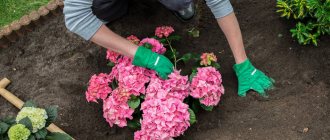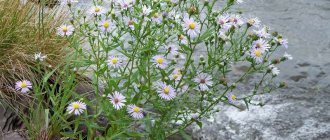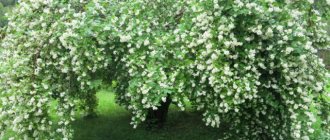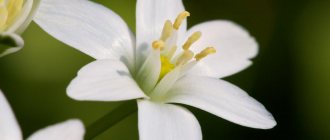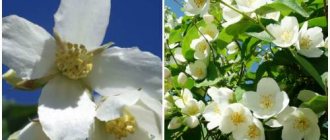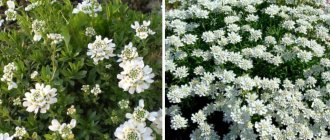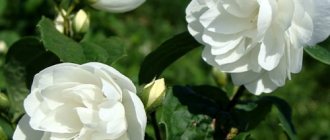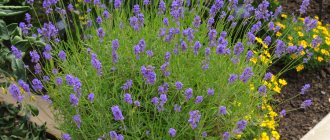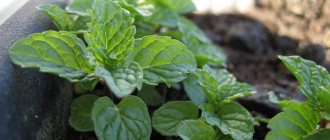Probably many people have heard about jasmine in their lives. This flower mainly decorates the windowsills of apartments and houses. But this shrub loves to grow in the wild. In particular, many gardeners grow it on their plots. It happens that some people confuse jasmine and mock orange. Plant care is the same, but there are differences in appearance and origin. The first one has much larger and more fragrant flowers. So, let's look at how to plant jasmine in the spring, and also learn all the intricacies of caring for it.
Briefly about the main thing
First, let's take a closer look at information about jasmine. This shrub came to us from Mediterranean countries. It is grown for decoration and is also used for medicinal purposes. A bush grows with a large branched crown. It blooms very beautifully with white or yellow flowers. They have a sharp but pleasant and sweet smell. Today there are many subspecies of this plant, so the shape and size of the buds depend on this. The plant is easy to care for and adapts to any weather conditions. Easily lives in the shade or sun, in the south or north. The plant can withstand severe drought and heavy rain. Bees love this flowering shrub. They collect pollen and nectar from the buds. Jasmine has its own unique characteristics that you should also know about.
Why pruning a bush?
Jasmine is grown for its intense fragrance in the garden and its beautiful, delicate flowers. Pruning jasmine in spring has several goals:
- improve the appearance of the plant;
- heal and rejuvenate the bush;
- extend the flowering period;
- increase the number of inflorescences and their size.
Removing long branches of jasmine helps create symmetry or create the desired shape. Heavily overgrown bushes are thinned out to produce young, strong shoots. The ends of branches about 40 cm long are cut off, or removed completely at ground level. Shoots older than 10 years must be cut off.
After pruning jasmine, the sections must be sealed with garden varnish to maintain the health of the bush.
Growing a plant in the garden requires regular care; jasmine is regularly freed from old inflorescences and unnecessary shoots. After winter, cut off frozen branches and roots on the surface of the earth.
Formative pruning of jasmine in the spring will prepare the plant for the flowering period and increase the number of young shoots, which will give it fullness and hide the bare trunks. In the spring, before the plant “wake up,” pruners are used to cut off the old branches flush with the ground or shorten them by a third of their length.
Pruning jasmine in the spring will give shape to the plant, remove weak and shorten branches that are too long, and allow you to get new shoots that will increase the splendor of the bush.
Over time, the “older” the plant becomes, the more “wild” shoots appear, which do not bear any load, but are actively fed from the roots. This greatly affects the aesthetics and health of the plant. In spring or autumn, remove unnecessary branches and thin out the inner space of the bush.
What is special about jasmine?
As soon as the fresh buds open, they produce a large amount of essential oil. It has a beneficial effect on a person's libido. The main parts of the essential oil, such as benzyl acetate, benzene alcohol, jasmone and other ingredients, have one main feature - they restore sexual function in the human body. You can prepare a decoction from jasmine flowers that will help you restore digestive function. It can also easily remove toxins and improve blood circulation. This is, at first glance, an ordinary flowering bush, but it hides many useful functions. Regardless of which varieties of jasmine decorate your garden, they all have healing properties. By planting such a shrub at your dacha, you will get a unique decoration that will guard your health. It’s worth figuring out how to plant jasmine in the spring and why it should be done at this time of year. But first, it’s worth considering the available varieties of this magnificent flowering shrub.
Description of the bush and features of its cultivation
Garden jasmine belongs to the Hydrangeaceae family. With real jasmine, a representative of the Olive family, it is related only by the abundance of snow-white flowers with a similar aroma. The height of this deciduous shrub depends on the variety and can vary from 70 cm (in miniature varieties) to 6 m. Its long, straight branches are covered with gray bark. The ovoid leaves range in size from 2 to 7 cm in length. The inflorescences are racemose, consisting of simple semi-double or double flowers.
There are different types and varieties of jasmine. It is better to choose for planting those that easily adapt to the climate where they will be grown. In Russia, the following types are most popular:
In addition to the Madagascar species, jasmine gardenia, which blooms with fragrant white flowers, is often grown at home.
The intensity of the aroma depends on the specific variety of mock orange. Some varieties have a subtle scent, while others emit a strong sweetish aroma. There are shrubs whose smell is reminiscent of berries. For example, jasmine of the Strawberry variety during flowering emits the aroma of the berry of the same name.
Strawberry jasmine variety
For those who decide to plant jasmine, caring for and growing this crop in the garden will not bring any special worries. Experts recommend planting several varieties of mock orange with different flowering periods on the site at once. In this case, it does not matter when the jasmine blooms, in what month, since clouds of white petals will decorate the area from June to August.
Note! Due to the presence of many beneficial components in tissues, jasmine is included in herbal medicinal preparations. Mock orange tea has a tonic and restorative effect, helps treat depression, relieves headaches, muscle pain, and inflammation in the joints.
Jasmine varieties
You can grow the following types of shrubs on your site:
- Small-leaved. The bush grows small. Its height reaches only 1 m. The branches are large, curved, with double leaves. The flowers have a pronounced strawberry aroma.
- Common coronary. This is a large species of shrub. Its height can reach three meters. The large white flowers have a sweet aroma. It will delight you with its beauty from the beginning of June. The leaves are green with yellow-golden colors.
- Fluffy. Ideal for large plots or city parks. Among all the representatives of jasmine, this is the tallest. Its length can reach 4 meters. It has no smell at all. This variety is also the latest. It can bloom for a month.
- Ermine mantle. This bush does not reach one meter in height. Flowers are located along the entire length of the branches and can delight you for two long months.
The varieties listed are considered the most popular. They are in great demand. The plant can be chosen to suit every taste. Everything will depend on your preferences.
When does garden jasmine bloom?
In central Russia, flowers appear in June and July. Early varieties bloom in May. If you select species according to flowering time, you can achieve a continuous fragrance of garden jasmine for two months.
On what shoots does mock orange bloom?
Garden jasmine lays flower buds on the shoots of the current year. To do this, immediately after flowering ends, branches with dried inflorescences are removed. Thus, the mock orange’s forces are directed to strengthening last year’s shoots and further growth. On unpruned bushes, many branched growths with a small number of small flowers soon appear.
What year does mock orange bloom after planting?
The shrub is valued for its fast growth, beauty and early flowering. Mock orange blooms in the third year after planting. Under the weight of fragrant inflorescences, the branches bend to the ground. The intoxicating aroma of garden jasmine has a positive effect on the emotional state.
Flowering time of mock orange depending on the variety and region of cultivation
Garden jasmine is a frost-resistant shrub. The flowering period of the shrub varies according to certain climatic conditions and varietal varieties.
- Crown or common mock orange blooms for 30 days. The height of the plant is 3.5 m. The process of bud formation begins in the second ten days of May.
- In early June, the small-leaved mock orange, a shrub up to 1 m high, blooms. The buds smell like strawberries.
- The thin-leaved mock orange variety Shrenka begins to bloom a little earlier. The species is distinguished by a long period of fragrance.
- The Shneeshturm variety begins to bloom at the end of June. The duration of the process is 2 months.
- Virginia garden jasmine is distinguished by beautiful double inflorescences. It blooms in July and can be fragrant for a whole month.
- The Gordon variety is capable of re-blooming in the fall.
How long does mock orange bloom?
In general, the flowering time for mock orange falls in May and lasts until September. The inflorescences are cream-colored and have five petals. Ornamental shrubs remain fragrant for an average of 2-5 weeks, much longer in a shady place. Some summer varieties may rebloom in the fall.
Proper planting of jasmine
In order for the shrub to grow well, you need to plant it correctly and then provide constant care. All varieties of jasmine are planted the same way. Let's look at what is necessary for the favorable growth of a shrub.
- You need to choose the right place. Since jasmine is an unpretentious plant, it will take root anywhere. The main thing is that there are no strong drafts. They prevent the bush from growing in the first 2 years of its life. It is better if you choose a sunny place for it, then the jasmine will smell fragrant and bloom to your delight.
- The plant will look good in a flower bed next to blue and purple flowers, such as delphiniums or lavender.
- Jasmine gets along well with neighbors such as hydrangea or spirea.
- It can only be planted in autumn or spring.
We are interested in planting jasmine in the spring. Let's look at this question more specifically.
What can be planted next to jasmine
Jasmine flowering is self-sufficient in itself, but by properly combining this shrub with other plants, you can get luxurious compositions with long-lasting flowering. Lovers of minimalism should combine jasmine with other green bushes . This is done in order to emphasize the gorgeous white inflorescences against the background of the surrounding “sea” of greenery. Also, this culture goes well with any type of lilac, hydrangeas and weigela.
During flowering, especially in the evening (due to lower air temperatures), the bush, along with an intoxicating aroma, exudes a huge amount of essential oils, which has a very beneficial effect on the central nervous system. Residents of private houses note that after planting this particular plant under the windows, depression goes away, sleep improves and even blood pressure normalizes .
What kind of soil should it be?
As we said earlier, jasmine is an unpretentious plant, so it does not have any special preferences in the soil. But it is better if the land is fertile. Jasmine roots do not tolerate excessive moisture. It is better to plant the plant at higher elevations. Before planting, it is worth providing drainage, which will consist of sand and small stones. To ensure that jasmine planting in the spring is successful, you should add about 50 grams of nitrophoska to the hole. As soon as the shrub is planted, the soil should be compacted well and watered. Now you should carry out constant fertilization of jasmine.
Methods for propagating shrubs in open ground
The methods of propagation of mock orange and jasmine are similar: one and the other species are cut, divided and distributed throughout the area. Only mock orange reproduces by seeds, but this process is lengthy and may end in failure.
The pros and cons of the ways in which jasmine shrubs propagate depend on the climate, the crop variety, and the purpose of breeding.
By layering
The layering method, how to quickly propagate jasmine, has an advantage in speed and quantity of planting material. From one adult bush you can dig up branches in several directions, obtaining several dozen young plants at once, which will be used for mass landscaping of the site or for sale.
This is done like this:
- The soil around the bush is dug up and leveled to a shallow depth.
- The branches intended for retraction are tied with wire under the lower bud.
- The shoot is tilted and buried in the ground to a depth of 2 cm. It can be additionally secured with staples.
- Sprinkle with soil and water.
After a while, green shoots will appear in several places, and roots will form in the ground. The cuttings are cut off from the mother plant and planted in a permanent place.
Dividing the bush
The bush is divided if it has grown greatly or needs to be moved to another place in the garden.
The day before the event, water the soil well to make it easier to dig up the bush.
How to do it:
- Dig up the plant, trying to damage the roots as little as possible.
- Use a sharp hacksaw to divide into parts so that each has roots and an above-ground part.
- Sprinkle the cuts with crushed activated carbon or wood ash.
- Plant in pre-prepared holes with nutrient substrate.
If you plant in the spring, then after 2 months the roots will take root and begin to grow. By winter they will be fully formed and ready for frost.
By cuttings
Jasmine is propagated by cuttings in the summer if it is possible to cut a small branch. A green shoot with 4 to 6 leaves is cut off in mid-July. Its length should be at least 5 cm, and the branch itself should have 2 - 3 internodes.
Note:
- The bush must be mature and overgrown.
- The branch is not older than 1 year, but with large leaves.
- The smaller the distance between nodes, the better.
The donor plant must be healthy.
How to propagate jasmine from cuttings:
- Cut the stalk.
- Place in warm, clean water to which activated carbon has been added.
- Check periodically. If the bottom part is rotten, cut it off and return it to the glass.
Roots appear after 1.5 weeks. They can be planted in the ground when their length exceeds 2 cm. Mock orange can be propagated by cuttings in the summer in the same way as jasmine.
Fertilizer rules
We've figured out how to plant jasmine in the spring. Now let's pay attention to feeding the plant. Here are some tips:
Tip 1. The first fertilizer should be applied only a year after planting the plant in open ground.
Tip 2. Jasmine should receive mineral fertilizers. One of these is prepared according to the following recipe: in 10 liters of water you need to mix 50 grams of superphosphate, 25 grams of urea, 25 grams of potassium sulfide. The fertilizer is thoroughly mixed and the bush is watered with it.
Tip 3. Jasmine should also receive organic fertilizers in the right quantity. These include manure or humus. One rule should be followed here: to prevent the roots of the plant from burning, the manure is diluted with water in a ratio of 1:15.
By following these simple tips, you will get an amazingly beautiful plant in your garden that will delight you with its pleasant aroma. Now we know not only how to plant jasmine in the spring, but also how to fertilize it correctly. But caring for the plant does not end there.
Diseases and pests
Fungal diseases rarely affect jasmine and only when there are prerequisites for this - excessive humidity and thickening of the crown. That is, the plant can get sick during the rainy season or when proper pruning has not been carried out. If signs of rust or spotting appear, the bush should be treated with a fungicide.
Among the insects that can parasitize jasmine are aphids, spider mites, and weevils. Young growths are especially often affected. An infusion of tobacco, garlic or laundry soap will help get rid of pests. If there are too many insects and traditional methods are ineffective, the mock orange is sprayed with a suitable industrial insecticide, preparing the solution according to the instructions for the drug.
Those who are passionate about ornamental gardening will sooner or later come up with the idea of planting jasmine on their site. You can be sure that the owner will not regret his choice. It is impossible not to fall in love with this delicate fragrant plant. In addition, jasmine is a long-liver; it can delight its owner with its beauty for 3-4 decades.
Source
Rules for crown formation in shrubs
Every owner of this wonderful plant should know how to prune jasmine in spring. In order for the bush to have a beautiful and well-groomed appearance, you need to form the correct crown.
It is worth familiarizing yourself with some basic rules for pruning:
- It is worth pruning in the spring, when the plant is in the growing season. Long branches are removed completely, short branches - half.
- To ensure that the branches are always filled with flowers, it is worth carrying out anti-aging pruning. All unnecessary and empty branches are removed.
- In an adult shrub, the main trunks should be shortened to 50 cm, the rest completely.
- Every year, be sure to sanitize the bush, removing excess and diseased branches.
Having figured out how to prune jasmine in the spring, it’s worth learning how to prepare it for winter.
Caring for a planted jasmine bush
After proper planting, it is necessary to pay special attention to how to care for the plant, since proper watering, timely feeding and pruning of branches are the key to the health and longevity of the plant.
Proper watering
Watering is one of the most important points in caring for any plant . Jasmine tolerates both wet and dry soil, but excessive drought has a detrimental effect on the bush. In particularly hot, dry summers, the crop should be watered abundantly. For 1 m² of land you will need at least 4 liters of water.
It is worth remembering that cold liquid can harm the root; the water temperature for irrigation should be at least +18°C. With a lack of moisture or improper watering in general, the leaves begin to turn yellow and flowering abruptly stops.
Trimming
Any ornamental shrub needs regular pruning and jasmine is no exception.
Pruning of this crop can be divided into two types:
After performing the above-described manipulations, it is advisable to apply garden putty to the cut to close the “wound” and prevent the appearance of fungus.
In order to rejuvenate the bush, some gardeners carry out complete pruning once every 3 years, leaving only 40-60 cm of shoots . This will not cause any harm to the plant.
Fertilizer and feeding
In the year of planting, the ornamental plant does not require additional feeding - the fertilizers applied during planting will be quite sufficient, since the root must strengthen itself, get used to the soil and harden.
For next spring (autumn) it is worth stocking up on special fertilizers. As fertilizers, jasmine prefers organic and mineral preparations : 20 g of urea and 35 g of superphosphate must be diluted in 11 liters of water. This solution is enough for 2-3 bushes. It is necessary to fertilize once a season. Manure, which is diluted in water (1:12), is also suitable as a good feeding.
How to prepare a bush for winter
Prevention and treatment of diseases and pests
Timely preventative measures are the best way to protect the plant from subsequent insect infestations.
Despite the fact that jasmine has a fairly strong immune system, it can still be affected by pests such as:
The most effective means of prevention are organic solutions - soap and wood ash. However, industrial chemical insecticides can also be used. For prevention, it is worth treating the entire bush (especially carefully the leaves) in the first half of spring (early March - mid-April).
If, despite the preventive measures taken, the plant is still affected by pests (this is what is commonly called “diseases” of the bush), it is not difficult to fight them. Suitable for this:
Wintering
Indoor jasmine needs the same care as outdoor jasmine. However, the latter must be constantly, every year, prepared for winter. If this is not done, the plant may die from low temperatures.
To prevent this from happening, you should follow some recommendations:
- Adult seedlings tolerate the cold season better and do not require additional preparation.
- The same cannot be said about young bushes. After the jasmine has bloomed, it is covered with special material or straw. This way the plant will survive the harsh winter well.
- To preserve the roots of jasmine, before wintering the soil near the plant trunk is dug up with the addition of compost.
If after a long winter you decide that your jasmine needs to grow somewhere else, then you can arrange for it to move.
How to care for jasmine after the flowering period
During the dormant period, caring for jasmine includes:
- reducing the frequency and amount of fertilizers applied using organic matter;
- reducing watering, but without prolonged drying out of the soil;
- pruning;
- preparation for wintering.
Pruning at the end of the active period involves removing faded buds and bad, weakest shoots.
Most varieties of jasmine are frost-resistant. But in regions with severe frosts, it is necessary to build a shelter for the plant, covering it with spruce branches or agrofibre. Young shoots under 4 years of age especially need shelter.
Jasmine is a beautiful plant, with a variety of colors of delicate petals, for which it is so loved. But it happens that it cannot bloom and the reason for this is improper care. To normalize the condition of the plant, it is necessary to create comfortable conditions for it outdoors or in a pot.
Reproduction
Jasmine is a plant that can be grown in your own area. This can be done in several ways:
- Seeds. They can be planted directly in open ground or as seedlings.
- By cuttings. They are harvested in June. Then they are planted in a greenhouse or directly into open ground.
- By shoots. In spring, shoots begin to prepare. They are cut from the main trunk. The strongest escape is chosen. He is allowed to overwinter, and next year he is planted in the place allocated for him.
- Dividing the root system. This method is used extremely rarely. This method is used only when they want to quickly grow another jasmine bush. This method is appropriate only in the autumn.
In the article we looked at how to plant jasmine in the spring. Use this information as a reference and you will be able to grow a jasmine garden. The main thing is not to confuse absolutely two different plants - home jasmine and garden jasmine. They are absolutely different from each other and require a different approach. Remember, jasmine is not only beautiful, but also useful. Want to improve your health? Then you simply must have this miracle plant on your site.
Plot
The aroma of jasmine is well known from childhood.
A wonderful miracle in the parent's garden! A huge spreading bush with star-shaped snow-white and cream flowers attracts with its exotic and sweet smell. No other shrub has such a fragrant and pronounced aroma. The article will tell you how to grow jasmine in your garden. Content:
In Latin, mock orange sounds like Philadelphus. The plant is named after Cleopatra's son, Ptolemy Philadelphus. All his life he loved fragrant flowers and incense. And people call it mock orange. In the distant past, a smoking pipe was made from twig-like straight shoots, part of which is called “chubuk”. The wood of the bush is hard, so it is used to make flutes, pipes and other crafts.
Jasmine planting and care
To grow a beautiful and neat plant, you should know and follow certain agricultural techniques.
Soil for planting garden jasmine
Feeding jasmine bushes
Formation of a jasmine bush and anti-aging pruning
Often, tall varieties of garden jasmine acquire an asymmetrical shape, which is associated with different growth rates of the plant. To make it more neat, regular formative pruning will be required.
Preparing jasmine for winter
Jasmine planting and care photo
Methods for propagating jasmine
There are many ways to obtain a new specimen of your favorite variety. Garden jasmine is propagated by layering, woody and green cuttings, as well as seeds. The last method is time-consuming, quite labor-intensive and takes a lot of effort. Jasmine blooms only in 7-8 years.
Seed propagation
Reproduction by layering
Propagation by young cuttings
Propagation by shoots with dense wood
Important! In the spring, they begin to plant overwintered cuttings in the garden bed. You can't waste time, the kidneys shouldn't swell!
Reproduction by dividing the root system
What does jasmine suffer from and what pests can it damage?
Mock orange is a strong shrub; pests do not like jasmine. But it would be a good idea to inspect garden jasmine for insects from time to time. You can fight pests with folk remedies, of which a solution of laundry soap is the most effective.
Jasmine can be attacked by:
If folk remedies do not help, you can treat with insecticides.
Tips for caring for garden jasmine
Working on creating a landscape composition
On a note! There are varieties of jasmine that are covered with flowers 2 times during the season. And from the low jasmine, which is used to decorate rock gardens, you may not even get flowers. Therefore, it is recommended that allergy sufferers keep low-growing species on their property.
Source
